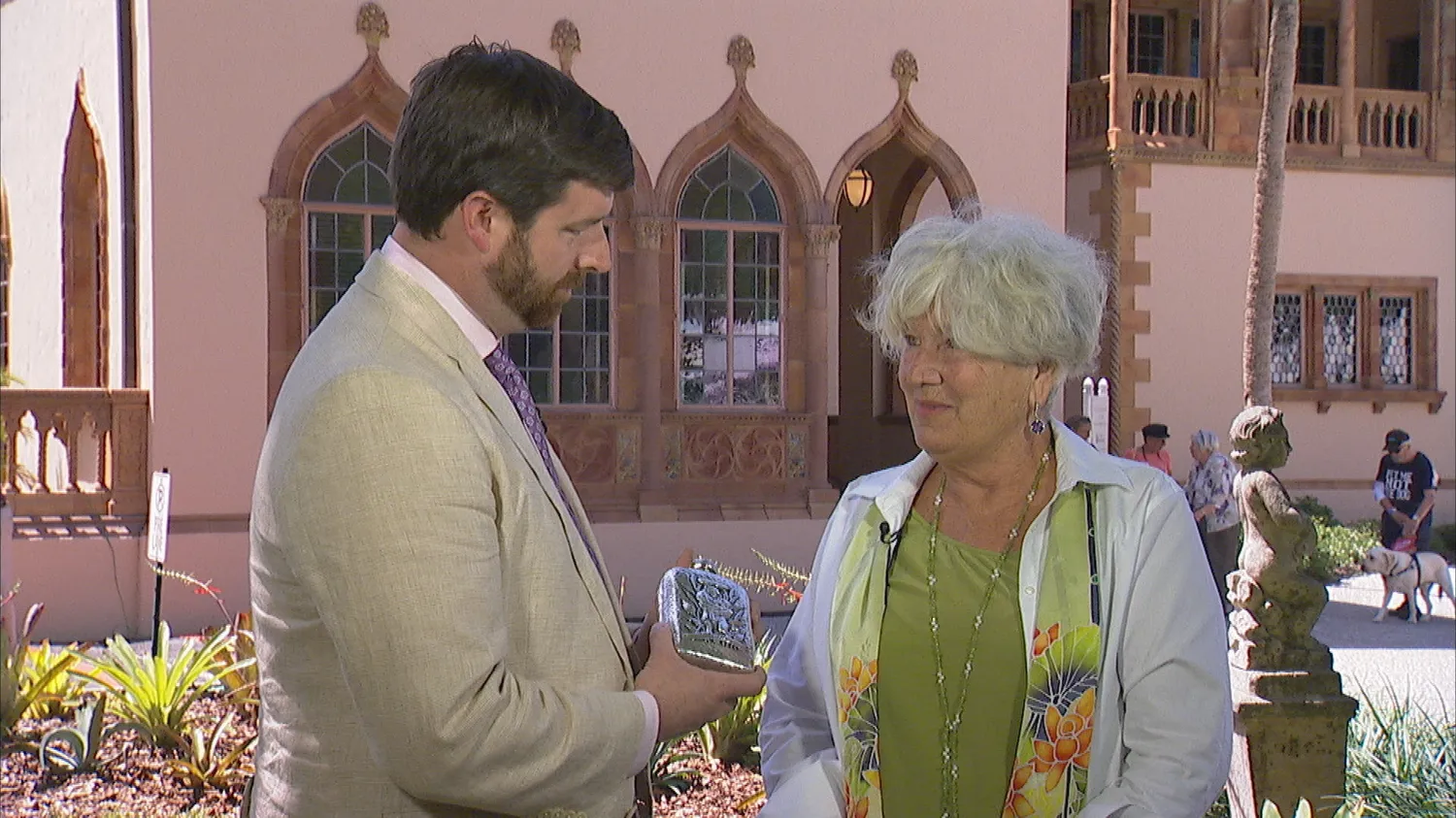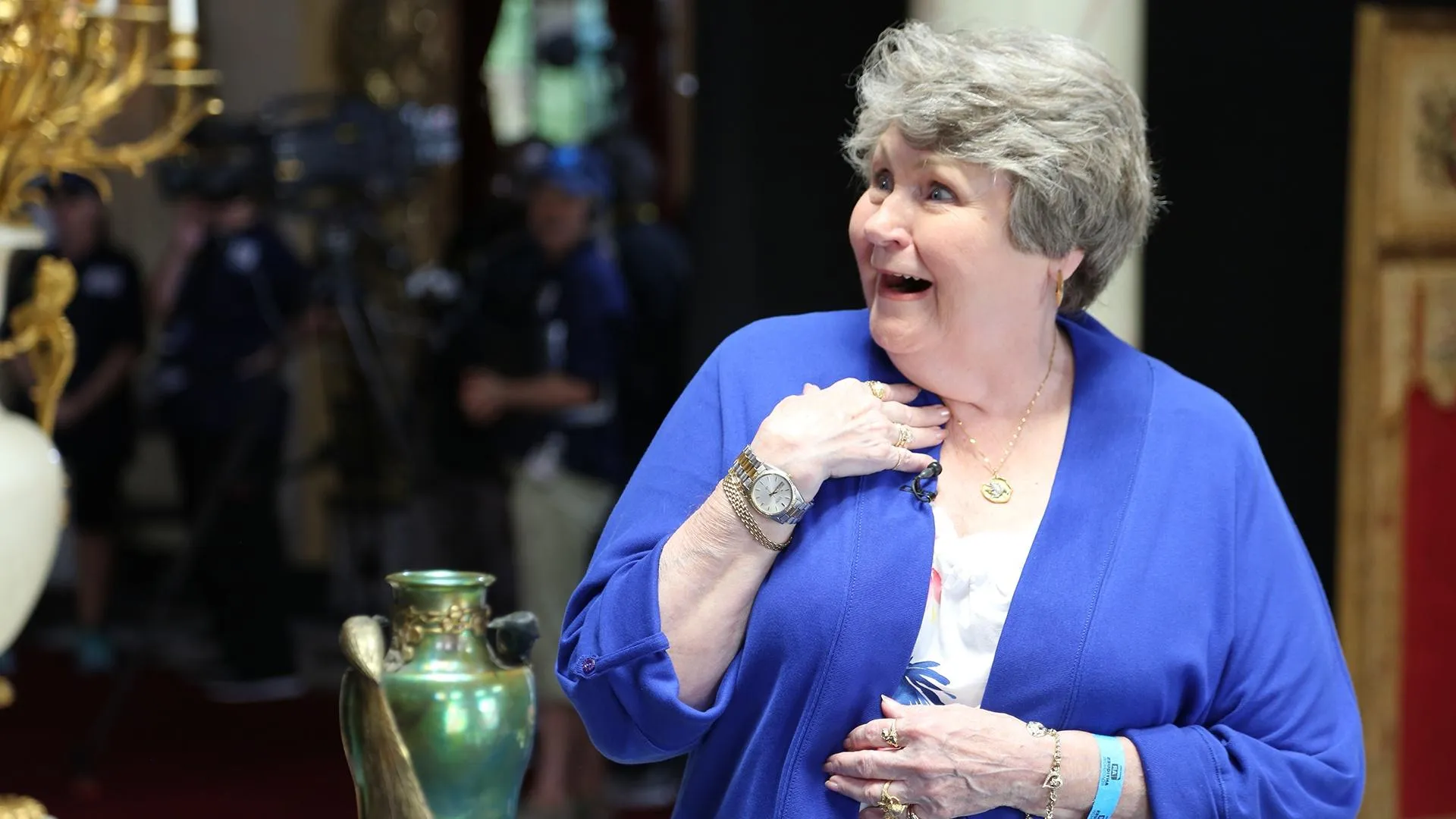GUEST: It's a flask that my father found in the basement of my grandparents' house when they cleaned it out. The monkeys kind of look like they're messing around on the front of it, which is kind of fun, 'cause I think it's Victorian-era, which was probably unusual.
APPRAISER: So we know it's Tiffany.
GUEST: Uh-huh.
APPRAISER: And of course, the bottom is marked. It says, "6374M8079, sterling silver, 5 1/2 gills." Five-and-a-half gills is the size, so it's roughly 650 milliliters. This is a big flask. The "M" is for Edward Moore of Tiffany. The 6374 is the date mark that has this piece produced in 1881.
GUEST: Okay
APPRAISER: If you go back to 1876 in Philadelphia, which was the Philadelphia Centennial, the Japanese were coming to America bringing their style.
GUEST: Oh.
APPRAISER: Edward Moore loved the world, he loved the Japanese culture, and he began to incorporate those elements in the pieces that Tiffany was making at the time. And so we call it Japonesque. You know, you go to the back and you have an inscription here from The Country Club. The Country Club is from Brookline, Massachusetts, and it's the oldest country club in America. The piece made from 1881, dedicated in 1884 to Thomas Thorne, the clay pigeon champion. From Pierre Lorillard, Jr.. Pierre Lorillard, Jr., sponsored the clay pigeon tournament and was from the Lorillard tobacco family. And it really highlights what was going on at country clubs in America at the time. They were hunting, clay pigeon shooting-- there was a lot going on that wasn't golf. They didn't get a golf course until 1893. Without looking at the inscription, as a Tiffany piece, I'm gonna tell you between $4,000 and $6,000.
GUEST: Okay.
APPRAISER: The inscription would add probably another $1,000.
GUEST: Uh-huh.
APPRAISER: And so you'd be at the $5,000 to $7,000 range. But given the rarity of the monkeys, the scene, it certainly can do a lot more. So it's a wonderful piece, and I'm glad you brought it in.
GUEST: I'm glad I brought it in, too.





